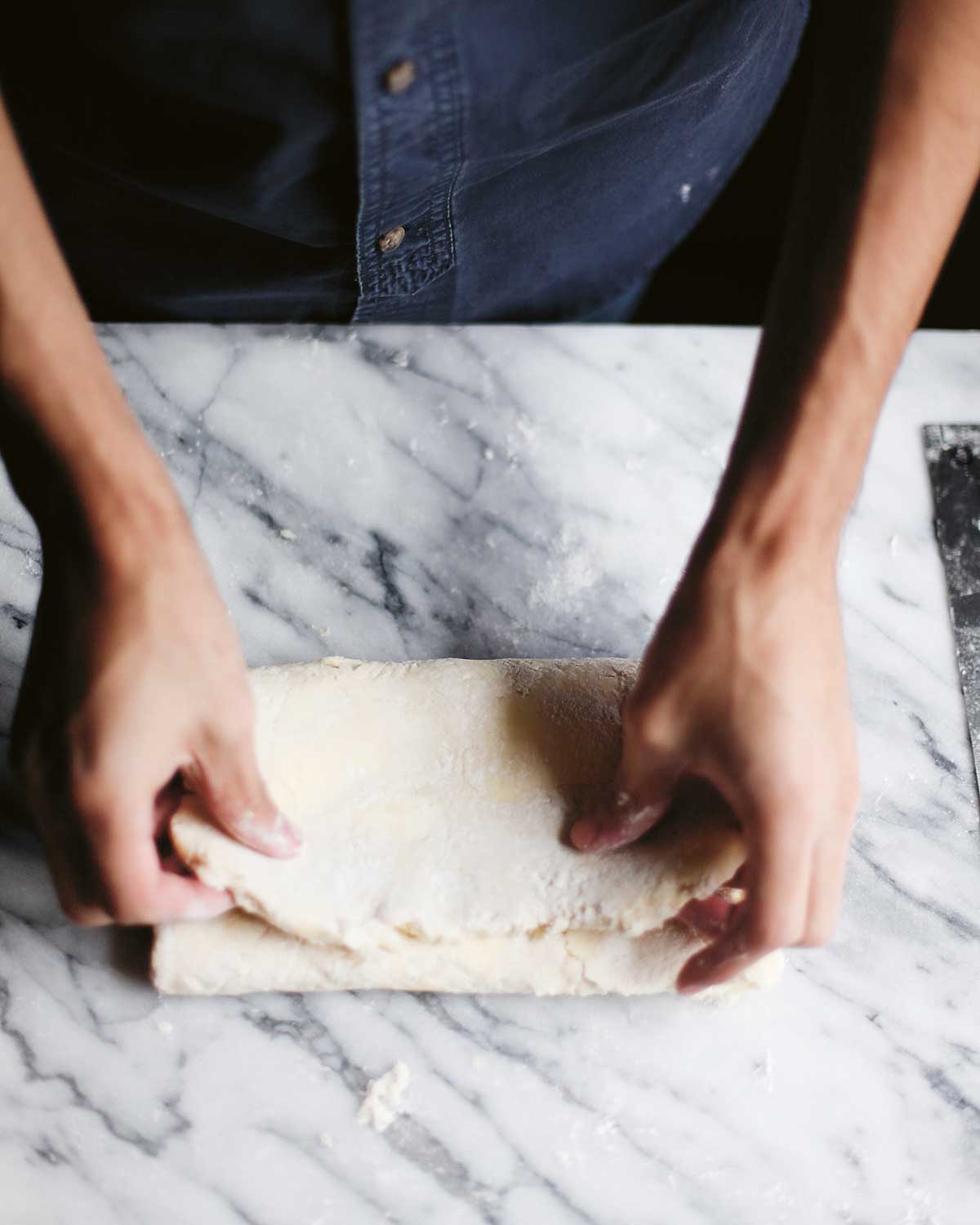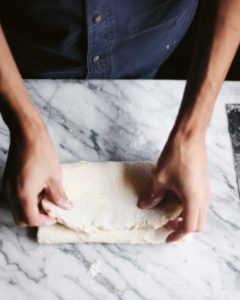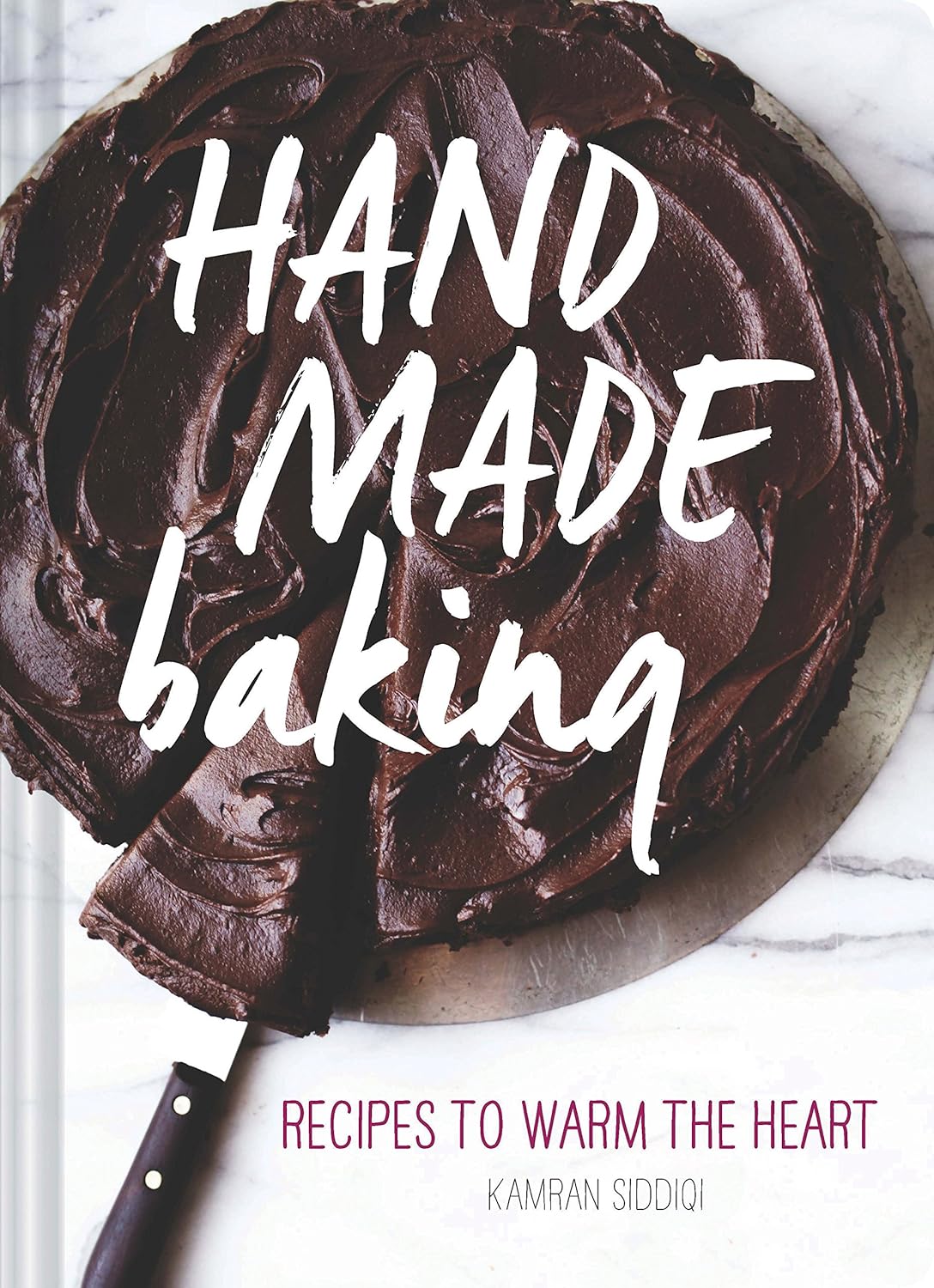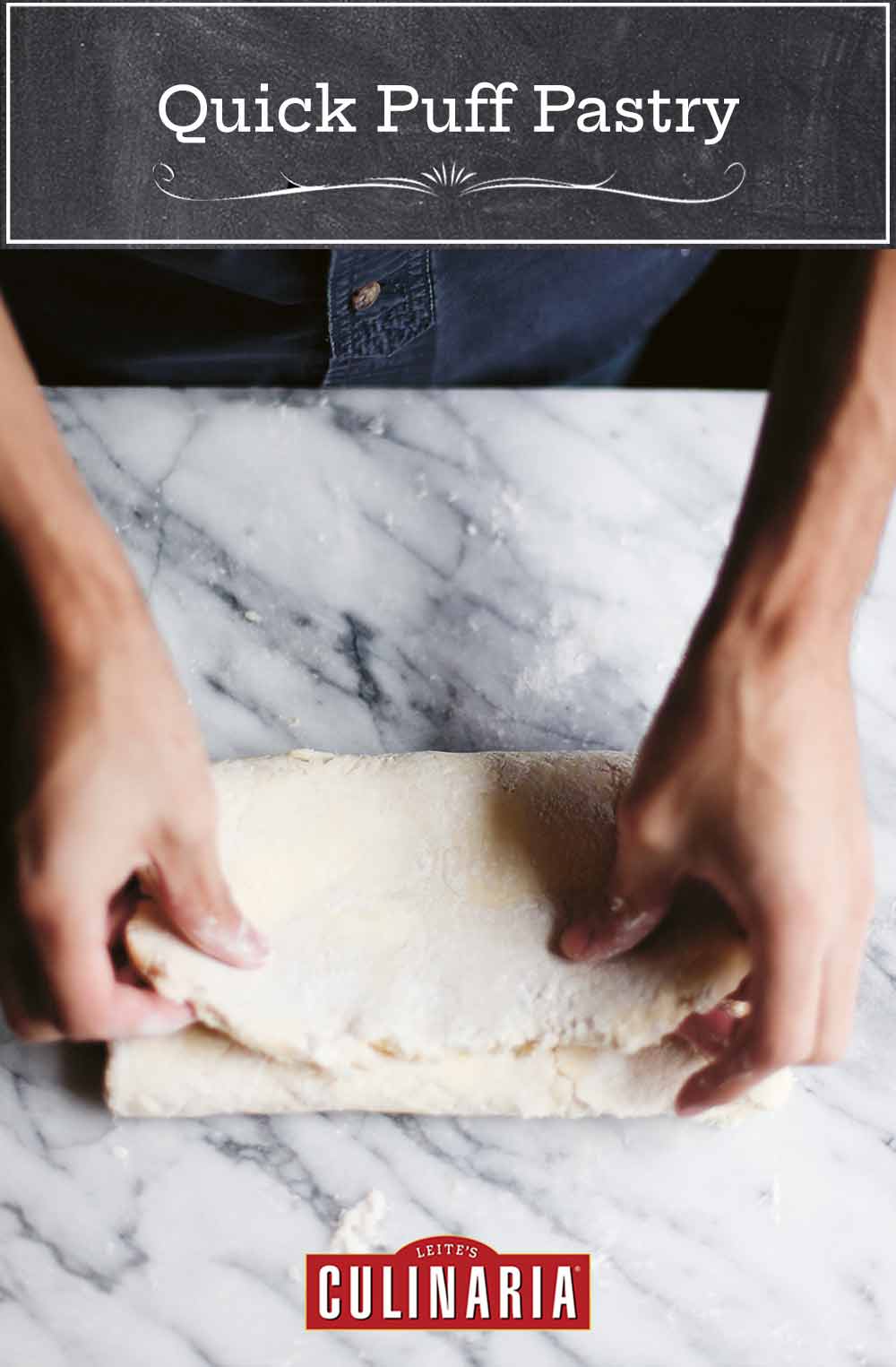
Many chefs say that it’s too difficult to make your own puff pastry at home and that you should only purchase it ready-made. What if I told you it’s actually simple and well worth the work, especially when you use this quick puff pastry recipe, which you can combine and roll out in less than 15 minutes hands-on time? The recipe results in beautifully puffy and flaky pastry. No more will you have to spend insane amounts of money on prepared puff pastry. [Editor’s Note: We’d like to add that the mass-produced store-bought brand of puff pastry found in grocery stores everywhere have a devastatingly long ingredient list containing preservatives galore and vegetable shortening as opposed to sweet, sweet butter. And if you turn to the blissfully all-butter rendition made by Dufour and found in specialty stores, you may not have enough dough left in your bank account for the rest of your recipe. So homemade it is.]–Kamran Siddiqi
What can you do with puff pastry?
Puff pastry plays a magical role in all manner of recipes both savory and sweet, and it can do all this at the drop of a toque when you stash it in the freezer. So to us, as the French would say, it’s a no-brainer. (Just kidding. They’d say something classier.) Here, how to use up that stash of quick puff pastry you’re no doubt going to keep in your freezer…
- Savory tarts
- Hors d’oeuvres
- The lid on a homemade chicken pot pie
- The cozy blankie in pigs in a blanket
- The flaky and buttery non-cheese portion of cheese danish
- Easy puff pastry turnovers, whether filled with jam or Nutella or Thanksgiving (or other) leftovers
- Delicately crisp and insanely buttery palmiers

Quick Puff Pastry
Ingredients
- 2 cups plus 1 tablespoon all-purpose flour
- 1/4 teaspoon fine sea salt
- 18 tablespoons (9 oz) cold unsalted butter, cut into 1/3-inch (8-millimeter) dice
- 2/3 cup ice water, (you probably won’t need all of this)
Instructions
- In a large bowl, whisk together the flour and salt. Toss in the butter and immediately stash the bowl in the freezer for 10 to 15 minutes.
☞ TESTER TIP: This is one recipe where having a kitchen scale comes in handy. It gives you absolute precision and you don’t have to dirty as many dishes.
- Pull the bowl from the freezer and use your fingers to quickly separate the chunks of butter from one another. Use a table knife or pastry blender to briefly cut the butter into the flour, just enough to coat the butter with flour. Turn the contents of the bowl onto a clean work surface—preferably a marble board or metal counter. (A chilled rimmed baking sheet placed upside down on a damp kitchen towel works well, too. The cold surface will keep the butter from plummeting in temperature.)
- Form a well in the middle of the pile of flour and butter and dribble in 2 to 3 tablespoons ice water. Quickly mix the water into the flour mixture with your fingertips (spread your fingers a bit apart, as if you were using your hand as a whisk). You can test the mixture by gently squeezing a small handful. The dough should hold together without crumbling. If it doesn’t, keep dribbling in water, 2 to 3 tablespoons at a time, until the dough starts to form. Remember to work quickly and to use your fingertips only.
- Working quickly, knead the dough onto itself for about 15 seconds, just until it holds together.
- Using a bench or dough scraper or your hands, form the dough into a roughly 4-by-4-inch (10-by-10-centimeter) square. Wrap the dough in plastic wrap and refrigerate until firm, about 30 minutes.
- Roll the dough out into a 15-by-8-inch (38-by-20-centimeter) rectangle. Fold the short ends over the middle, as if you were folding a letter, to create 3 layers. This is the first fold.
- Rotate the entire rectangle of dough 90 degrees and flip it over so the seam side (or what was the top fold) is facing down. Roll the dough away from you (not side to side) into a 15-by-4-inch (38-by-10-centimeter) rectangle. Fold the short ends over the middle to create 3 layers again. This is the second fold.
- Wrap the dough in plastic wrap and refrigerate it for 30 minutes. (If it isn’t hot and humid in your kitchen and you’re working quickly, you can skip this refrigeration step and immediately continue with the recipe.)
- Repeat the process of folding and rotating the dough to create the third and fourth folds. Wrap the dough in plastic wrap and refrigerate it for at least 30 minutes and up to 3 days before using it. (You can freeze the dough for up to 2 months. Just wrap it well in plastic wrap and place it in a freezer-safe resealable plastic bag before tossing it in the freezer. Thaw it out in the refrigerator before using.) Originally published February 22, 2015.

Explore More with AI
Nutrition
Nutrition information is automatically calculated, so should only be used as an approximation.
Recipe Testers’ Reviews
I loved this quick puff pastry recipe! It’s almost as easy to make as regular pie dough, but with spectacular results. I used it to make a tarte tatin, and the dough baked up lovely and puffy, flaky and tender. I also made the recipe for palmiers on this site, which was equally delicious.
This made 23 ounces dough for me. I used 1/3 cup water to get the dough to stick together. After I made the dough, I refrigerated it for almost an hour before it firmed up, but then I didn’t need to refrigerate it again during the folding process since my kitchen was pretty cool. I floured the work surface and was glad I did since the dough still stuck to the counter a little bit. The rolling process was simple and easy, and on the third and fourth turns, I really didn’t need much additional flour. I used a dough scraper to pick the dough up from the counter, which also helped.
This is a very easy puff pastry. You can have your pastry done and in the oven in a little over 30 minutes.
I made this twice. The first time I made it exactly as described. The results were perfect, but the process was very messy. The second time, I put everything in a food processor and pulsed it 12 times. The result was perfect, and the mess was confined to a bowl and the processor.
One final suggestion, or rather a story I want to share, pertains to when I wasn’t thinking and made a braided Danish with this quick puff pastry recipe on a rimless sheet. As the pastry heated up, the butter drained down from the pastry, leaving it airy and crisp. But of course, there was quite a bit of butter all over the bottom of the oven.
This will be my go-to recipe for puff pastry. I thoroughly enjoyed making this quick puff pastry recipe. It was almost therapeutic for me and the results were fantastic. I used the puff pastry dough to make some ham and Gruyère palimer appetizers and the pastry was light, crisp, and flaky, so much better than store-bought puff pastry.
My dough came together with a total of 7 tablespoons water using the instructions of adding 2 to 3 tablespoons water at a time. Refrigeration for the first 4-by-4-inch square didn’t yield a firm dough after a 1/2 hour so I continued to leave it in the refrigerator, ran some errands, and came back to it after about 1 1/2 hours in the refrigerator and it was definitely firm at that point. I would recommend the longer refrigeration time as it helped keep the dough really cold while I completed all of the folding steps at once without stopping to refrigerate the dough midway through.
I lightly dusted my counter and the top of the dough with flour to keep the dough from sticking. Because my dough was extra cold, I worked quickly with my folds and was able to make all 4 book folds without need for extra refrigeration halfway through. I was refrigerating the dough for use the next day so I actually rolled the dough into the final size needed, placed parchment paper on the top and bottom, and then gently folded the dough into thirds over itself and wrapped the package in plastic wrap (similar to how store-bought puff pastry is wrapped). I was afraid of extra butter oozing from this recipe but it did not.
I worked on marble and used a pastry metal bench scraper which came in very handy and was necessary for this recipe. In fact, I purchased the bench scraper in anticipation of making this recipe. My bench scraper is metal and has centimeter and inch markings, which was also a helpful guide to measure the dough. I purchased it at Ross for only $3.99.













Scaled this up by 1.2x to make Galette des rois. The result was better than ones we’ve bought from a French bakery that specializes in them. Light, flaky perfect rise. I will be making this every year.
The one change was just putting everything in the KitchenAid mixer with dough paddle instead of mixing by hand.
Wow, Julien! Your galette is stunning and we are so pleased that it turned out so well. Thank you for taking the time to comment.
This recipe was a little complicated but I think good practice for attempting puff pastry recipes in the future.
Mike, puff pastry tends to be complicated; even quick puff. And it is great practice for working with laminated doughs.